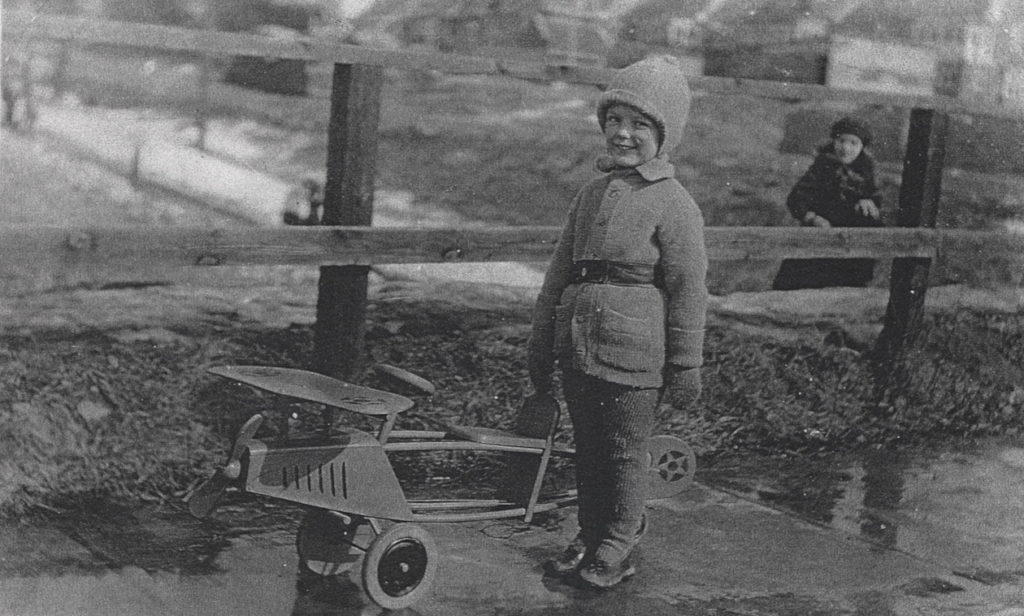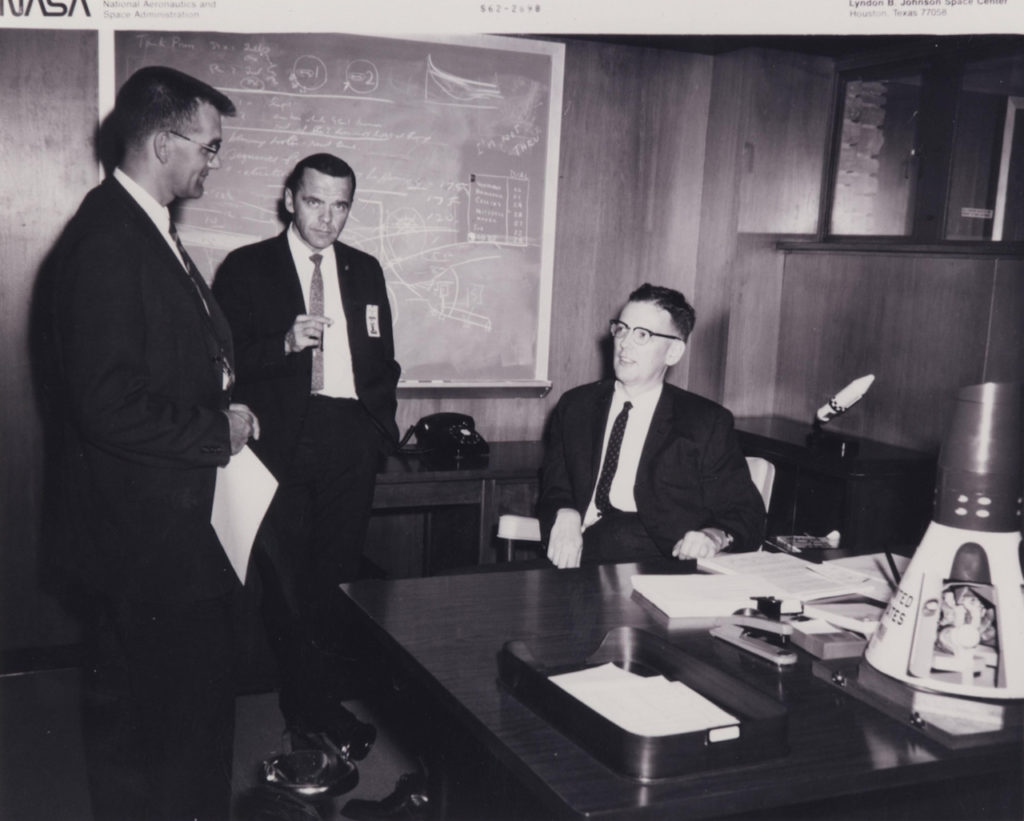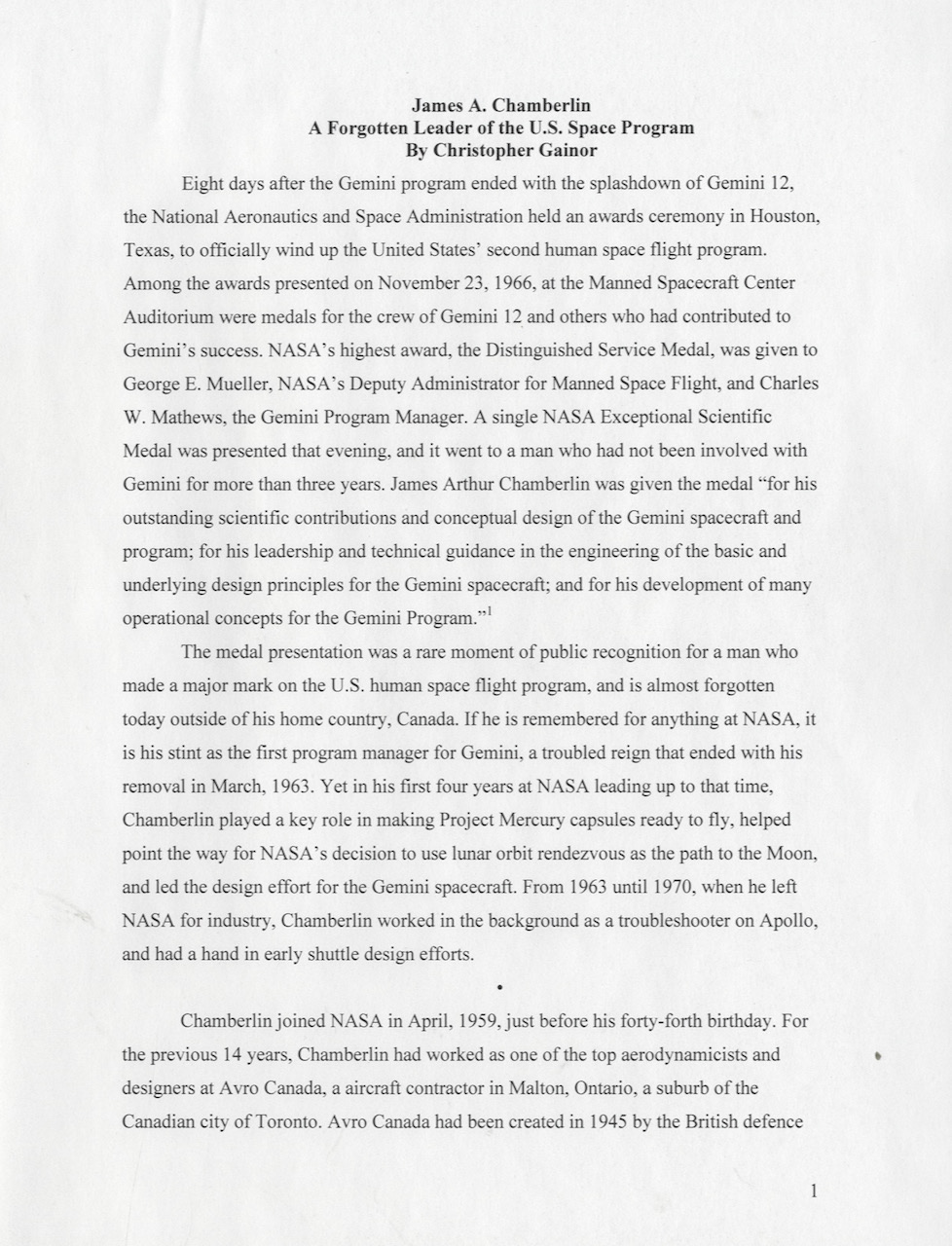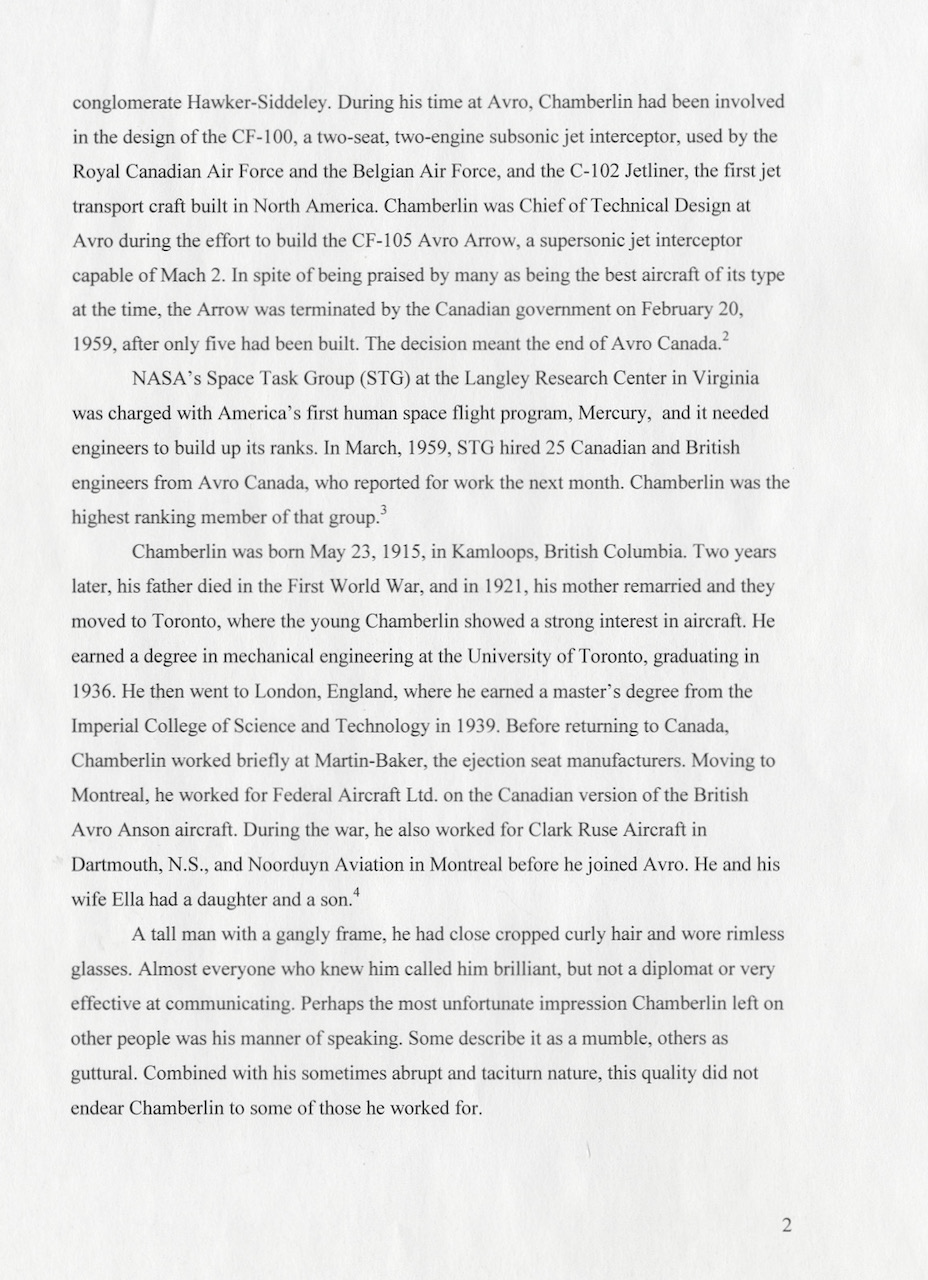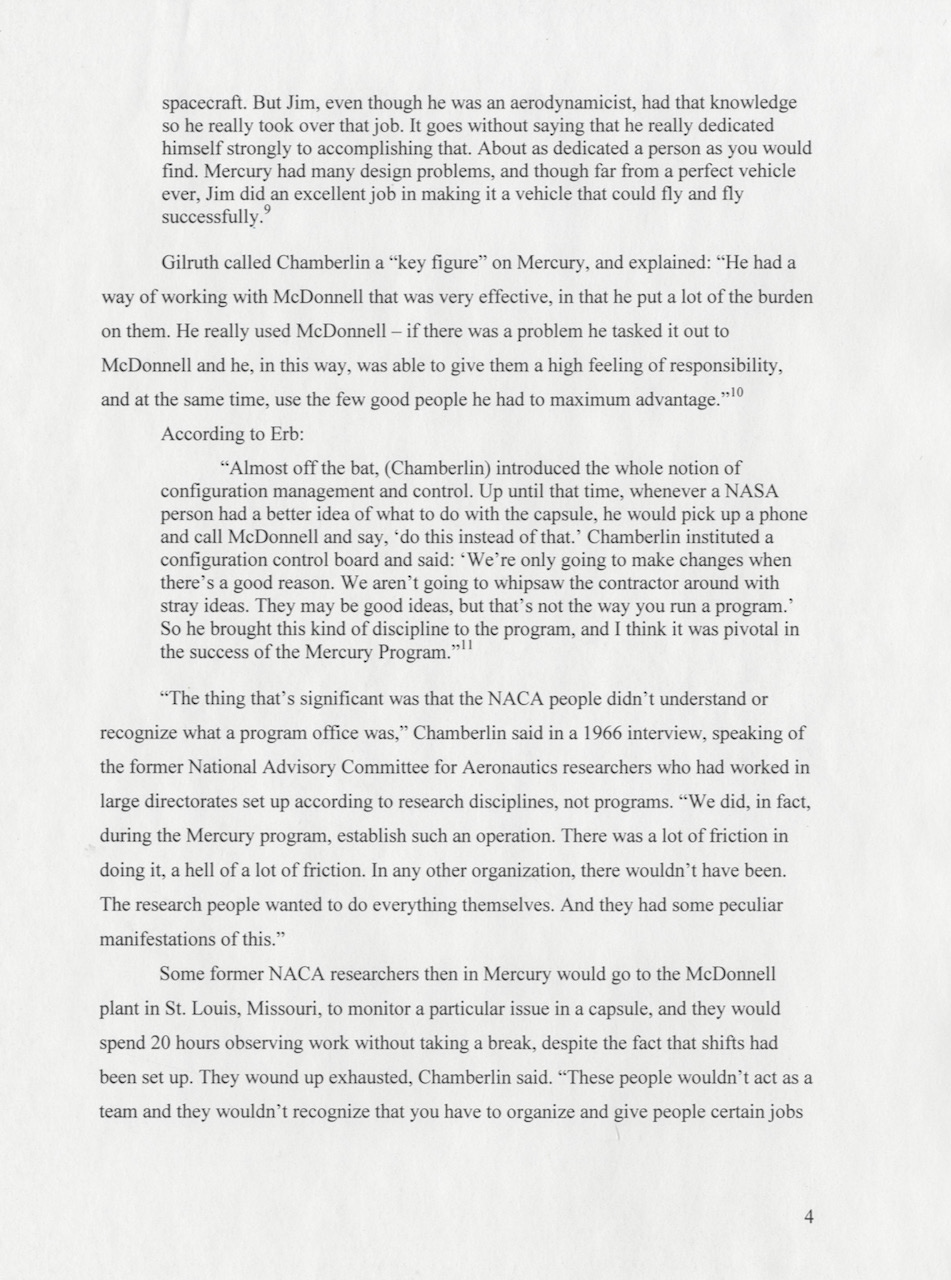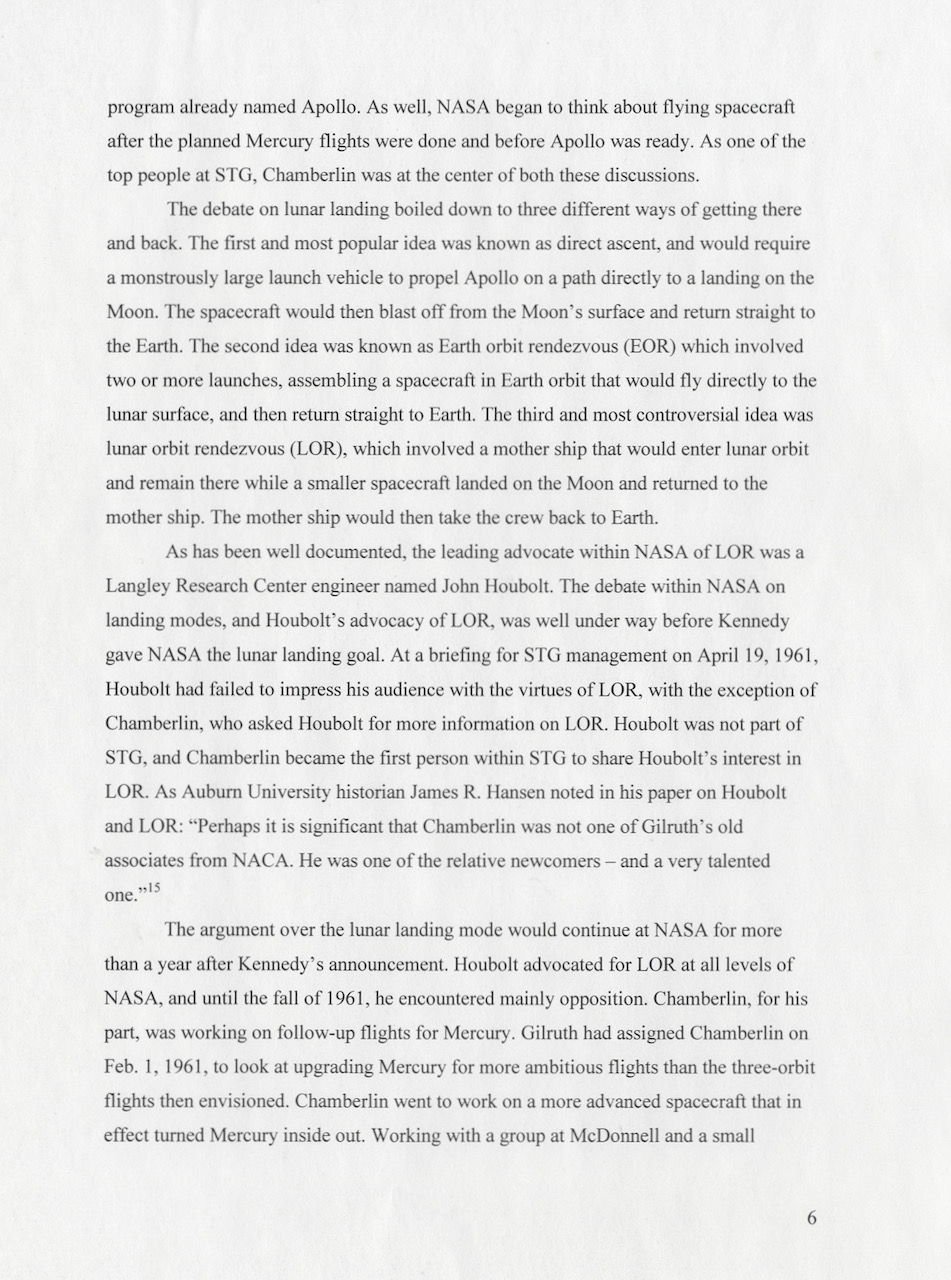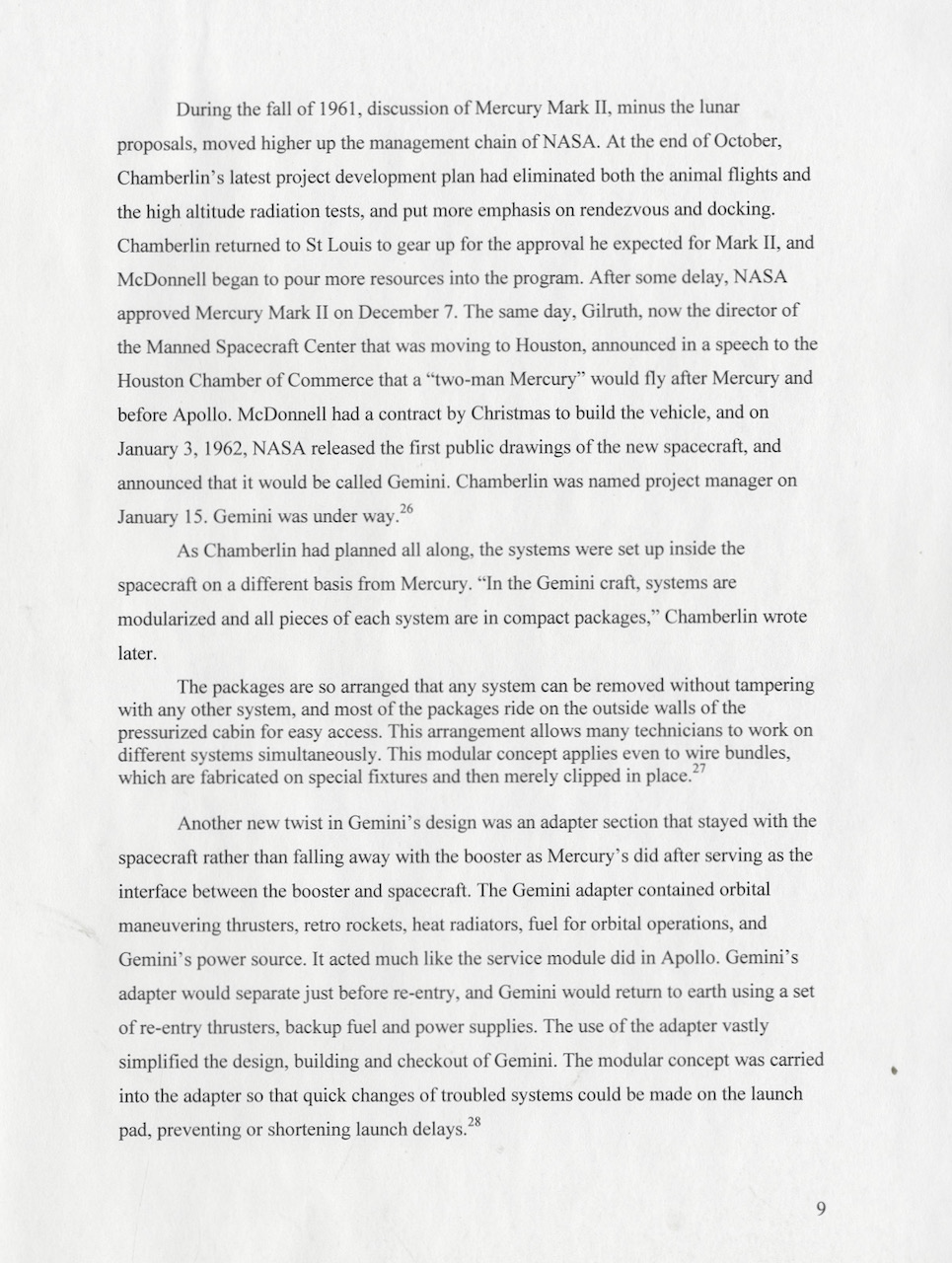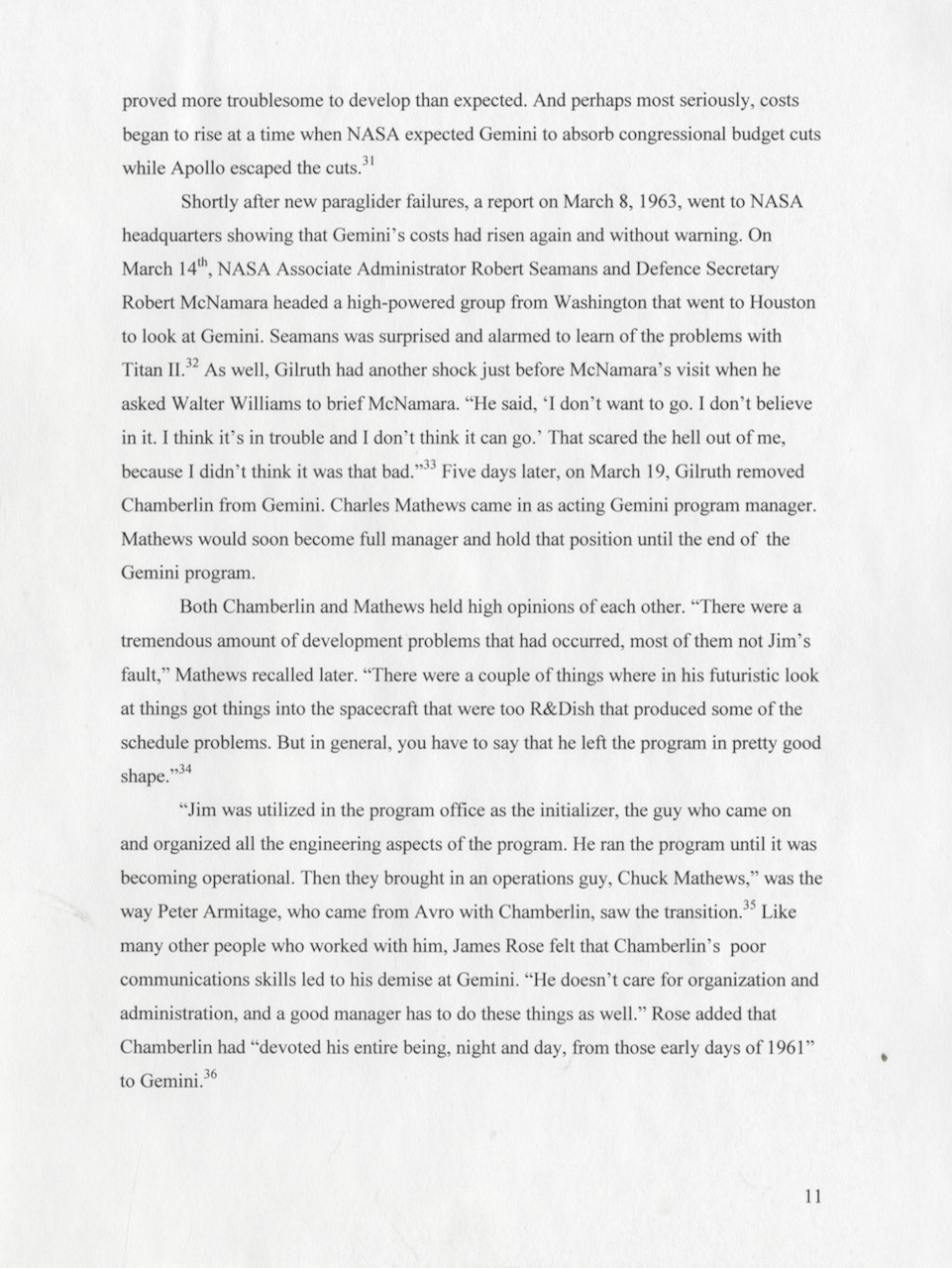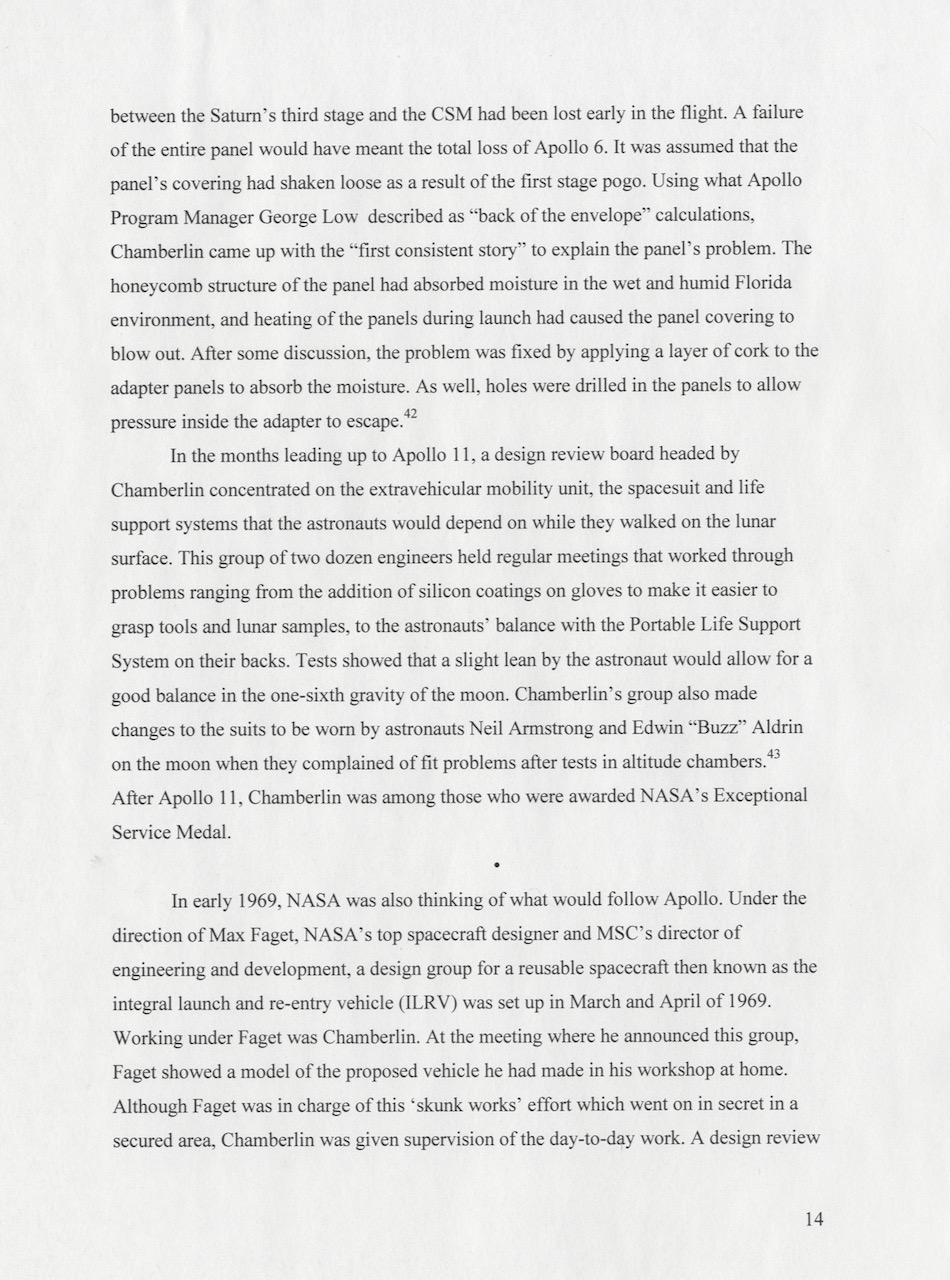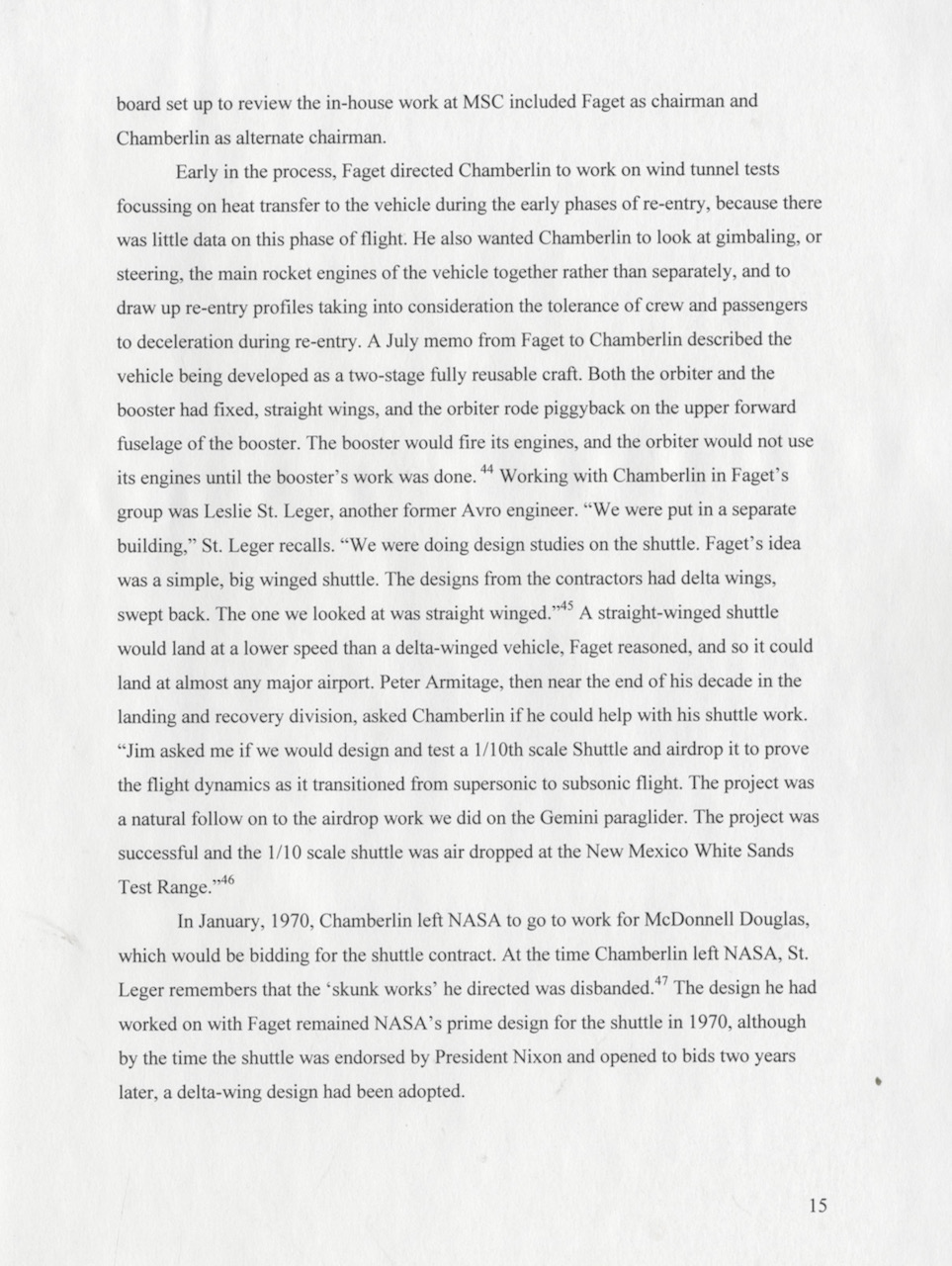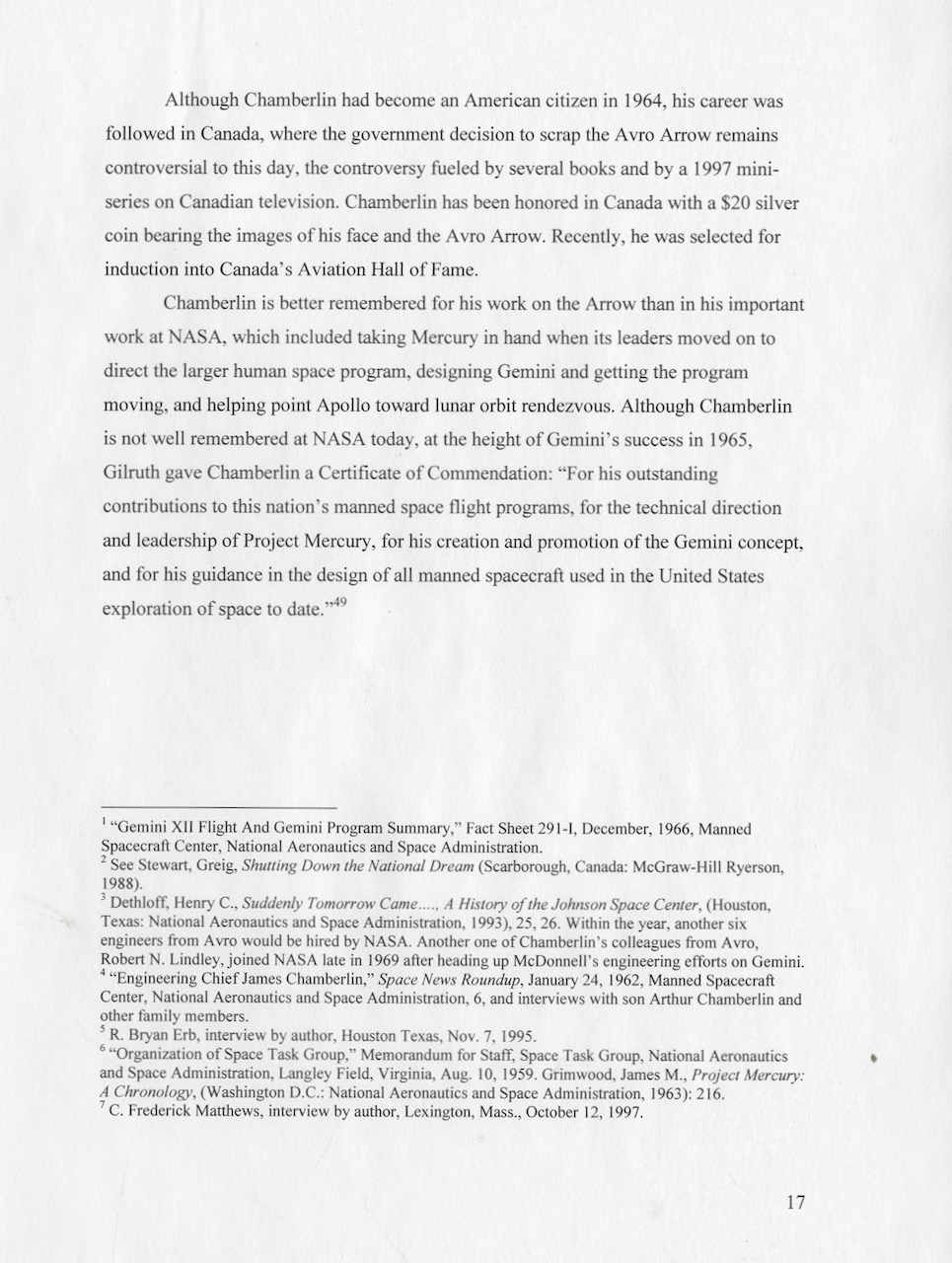James Arthur Chamberlin
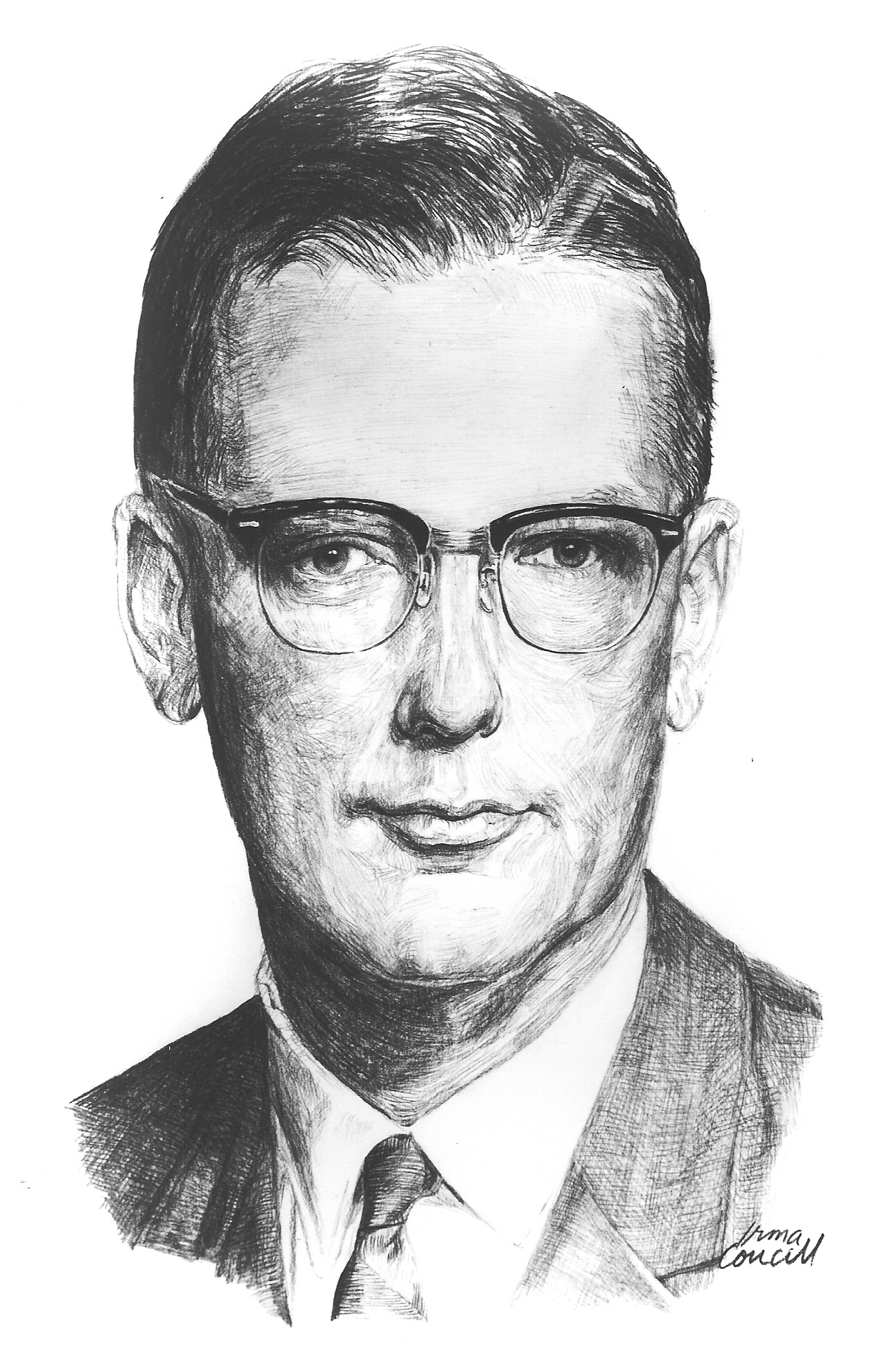
Birth Date: May 23, 1915
Birthplace: Kamloops, British Columbia
Death Date: March 8. 1981
Year Inducted: 2001
Awards: The Exceptional Scientific Achievement Medal and The Exceptional Service Medal (NASA)
His engineering genius, technical direction and leadership have been of significant benefit to Canada. Further, his contributions to the United States space programs have given much credit to his home country of Canada
Designing Aircraft
James Arthur Chamberlin was born in Kamloops, British Columbia on May 23, 1915. He and his mother settled in Summerland after his father died in the First World War. He began school in Summerland, but the family moved to Toronto, Ontario where he received most of his early education. As a child, he built original design model airplanes and during this period he won a Toronto newspaper contest for model aircraft design.
Chamberlin graduated from the University of Toronto in 1936 with a Bachelor's degree in Mechanical Engineering (Aeronautical Option) and was the winner of the J.A. Findley Scholarship in his third year. He then went to London, England, where he earned a Diploma from the Imperial College of Science and Technology in 1939. Before returning to Canada he worked briefly at the Martin-Baker Aircraft Company.
Back in Canada
On returning to Canada, he worked for Federal Aircraft in Montreal, Quebec on the Canadian version of the British Avro Anson from February 1940 to September 1941, performing stress analysis and design. In September 1941 he joined Clark Ruse Aircraft in Dartmouth, Nova Scotia where, until 1942, he was Chief Engineer in charge of engineering and overhaul of aircraft used in training and anti-submarine work. For the balance of the Second World War he was with Noorduyn Aviation in Montreal working as a research and design engineer, where he designed and built a wooden mock-up of a twin-engine Norseman intended for post-war commercial bush operation. This aircraft never went into production.
Work With Avro Aircraft
In February 1946, Chamberlin joined the engineering staff at Avro Aircraft Limited in Malton, Ontario, where he became Chief Aerodynamicist on the Avro C-102 Jetliner and the CF-100 All-Weather Jet Interceptor. He played an influential role in establishing the resulting configuration of both aircraft.
In the early 1950s, the RCAF accepted an Avro Aircraft proposal for a supersonic interceptor, the CF-105 Arrow, a future replacement for the CF-100. Chamberlin was appointed Chief of Technical Design, heading up a team of technical staff working on the Arrow project, as well as supporting the ongoing CF-100 program and other studies being conducted by the preliminary design group. The Arrow was state-of-the-art in almost every technological area: structures, aerodynamics, propulsion, stability and control, flight controls, armament, electronics, hydraulics, air conditioning and fuel system. Under Chamberlin's leadership many of the engineering research and development techniques applied to the Arrow project were a generation or more ahead of those used by other aircraft companies. His methods of technical leadership and his achievements were remarkable by any standards. The cancellation of the Avro Arrow on February 20, 1959 initiated the breakup of the extraordinarily talented team of engineers at Avro - a team that had placed Canada at the forefront of world aviation technology.
Along with Chamberlin, other senior Avro engineers working on the design of the Arrow were Robert Lindley, Chief Engineer, Jim Floyd, Vice President and Director of Engineering, and Guest Hake, Project Engineer. In addition to these exceptionally capable designers, Avro had on its staff an exceptionally talented test pilot, Janusz Zurakowski, who tested every facet of the Arrow taking it to Mach 1,189.
Work With NASA
At that time, the newly formed Space Task Group at the National Aeronautics and Space Administration (NASA) facility at Langley, Virginia, was overloaded with urgent work on the design of the Mercury space capsule that would put the first Americans into space. The Group desperately needed experienced engineering personnel to develop the project. Robert Gilruth, a former Assistant Director for the National Advisory Committee for Aeronautics, NASA'S predecessor organization, led the Space Task Group and Project Mercury. Gilruth was well aware of the unique capabilities of the Avro engineering team, since the Langley facility, as well as the Wallops Island site, had been involved with the wind tunnel and free-flight testing of some of the Arrow models. He was quick to take advantage of their availability. He arranged with Avro to hire a team of around 25 engineers, under Chamberlin's leadership, to go to Langley to work on the development of Mercury. After moving to Langley, Chamberlin became Gilruth's close advisor. He played a major role in the final design of the Mercury capsule that made its first manned, sub-orbital flight in May of 1961, and put John Glenn into orbit on February 20, 1962. He became head of engineering and contract administration on the Mercury project and later, Program Manager for Gemini, the two-man spacecraft that bridged the gap between Mercury and the Apollo lunar landing program. He spearheaded the design effort on Gemini, which contained many technical advances over the Mercury spacecraft.
Chamberlin was one of the first people at NASA to understand that Apollo would more likely succeed by using the lunar orbit rendezvous flight mode, rather than the direct flight mode favoured by others. He became one of NASA'S top troubleshooters on the Apollo program, helping to solve problems with the command and service modules, the lunar module and the lunar life support systems. Chamberiin received the NASA Exceptional Scientific Achievement Medal and the NASA Exceptional Service Medal. He was described by one of NASA'S administrators as "one of the most brilliant men ever to work at NASA". In February of 1962, a ticker tape parade was held along the streets of New York City honouring America's first astronaut to orbit the earth, John Glenn, who was seated in the first car. In the second car was a quiet Canadian from Kamloops - James Arthur Chamberlin.
Recognition and Honours
Chamberlin was honoured in Canada by the receipt of the University of Toronto 1966 Alumni Medal and was inducted into the Engineering Hall of Distinction in 1978.
In 1970, he left NASA to work for McDonnell Douglas Astronautics. As Technical Director for Advanced Space Programs, he contributed to the work on the Space Shuttle.
While James Chamberlin's aerospace activities in Canada and the United States have received worldwide acclaim, his inspirational technical genius was passed on to many Canadian engineers who worked with him. He died in Houston, Texas on March 8, 1981.
James Arthur Chamberlin was inducted as a Member of Canada's Aviation Hall of Fame in 2001 at a ceremony held in Ottawa, Ontario.
In the News
To return to the Inductee Page, please click here.

